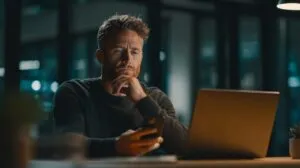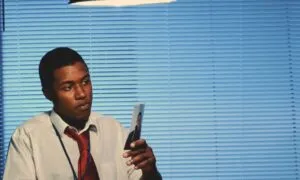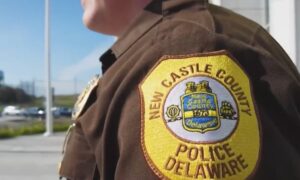Copyright laws are pivotal in safeguarding the rights of creators and ensuring that their work is protected from unauthorized use. These laws are designed to give creators exclusive rights to their works, which can include:
- Music
- Art
- Literature
The interpretation and enforcement of these laws have led to numerous high-profile legal battles over the years, sparking significant debate and controversy.
These cases often highlight the fine line between inspiration and infringement, and their outcomes have had profound impacts on various industries.
Table of Contents
ToggleCase 1: The Verve vs. The Rolling Stones
The Verve’s 1997 hit “Bitter Sweet Symphony” became an international success, but its use of a sample from an orchestral version of The Rolling Stones’ “The Last Time” sparked a major legal dispute.
Initially, The Verve had negotiated rights to use a five-note segment from the orchestral version recorded by the Andrew Oldham Orchestra.
However, The Rolling Stones’ former manager, Allen Klein, claimed the use extended beyond the agreed license, focusing on the underlying composition rather than just the recording.
As a result, The Verve was forced to relinquish all royalties from the song to The Rolling Stones, and songwriting credits were transferred to Mick Jagger and Keith Richards. An outcome was controversial, highlighting the complexities involved in sample clearance.
In a surprising turn of events in 2019, rights to “Bitter Sweet Symphony” were finally returned to The Verve’s Richard Ashcroft, marking an end to a decades-long dispute.
Key Points:
- Initial clearance of the sample led to later disputes over composition rights.
- Royalties and credits were transferred to The Rolling Stones.
- The case was recently reversed, restoring rights to Richard Ashcroft.
The impact of this case underscores the intricacies of copyright law, particularly concerning musical sampling. It also highlights the potential for retroactive disputes, as agreements that seem settled can later be contested, affecting the financial and creative rights of artists.
Case 2: Marvin Gaye vs. Robin Thicke & Pharrell Williams
The case between Marvin Gaye’s estate and the creators of “Blurred Lines,” Robin Thicke and Pharrell Williams, became one of the most talked-about copyright cases in music history.
The lawsuit alleged that “Blurred Lines” copied the “feel” and instrumentation of Gaye’s 1977 hit “Got to Give It Up.” Unlike typical copyright cases focusing on direct plagiarism, this lawsuit centered on the broader elements of the song’s vibe and production style.
In 2015, a jury ruled in favor of Marvin Gaye’s family, awarding them $5 million in damages and 50% of future royalties from “Blurred Lines.”
The ruling set a precedent by recognizing that copyright protection can extend to the overall feel of a song, not just specific notes or lyrics.
As a result, this case has led to an increase in similar lawsuits within the music industry, where artists and estates are more vigilant about protecting their creative legacies.
Key Points:
- The lawsuit focused on the similarity in feel and instrumentation.
- Gaye’s family was awarded $5 million and 50% of future royalties.
- The ruling set a precedent for copyright protection of a song’s overall vibe.
The broader implications of this case have stirred ongoing debates about creativity and originality in music.
It raises questions about how much influence an artist can draw from previous works before it crosses the line into infringement, thus shaping the landscape of music production and litigation.
Case 3: Andy Warhol Foundation vs. Lynn Goldsmith
The legal battle between the Andy Warhol Foundation and photographer Lynn Goldsmith revolves around Warhol’s use of Goldsmith’s photograph of Prince to create a series of silkscreen prints.
Initially, a lower court ruled in favor of the Warhol Foundation, citing the transformative nature of Warhol’s work.
An appeals court later reversed this decision, stating that Warhol’s use did not sufficiently transform the original photograph to qualify as fair use.
As of 2022, the case has escalated to the Supreme Court, drawing significant attention to the transformative use doctrine in visual arts. The doctrine allows artists to use existing works in new and creative ways, provided they add significant new expression or meaning.
An outcome of this case was that the foundation had to pay $21,000 to Lynn Goldsmith.
Key Points:
- The initial ruling favored Warhol based on transformative use.
- An appeals court reversed the decision, questioning the extent of transformation.
- The case, now with the Supreme Court, could redefine fair use in visual arts.
The case emphasizes the ongoing tension between protecting original works and fostering creative reinterpretation. It raises critical questions about the limits of fair use and how transformative a work must be to gain protection under copyright law, impacting artists across various media.
Case 4: Gigi Hadid vs. Xclusive-Lee
In a notable case involving supermodel Gigi Hadid, the issue of copyright protection for paparazzi photographs was brought to the forefront.
Hadid posted a photo of herself on social media, taken by a paparazzi photographer without obtaining permission. The photographer, represented by Xclusive-Lee, filed a lawsuit claiming copyright infringement.
Hadid’s defense was based on the argument of co-authorship, asserting that her pose contributed creatively to the photograph.
However, the case was dismissed due to improper copyright registration by the photographer, not addressing the substantive claims. The outcome underscored the critical importance of proper copyright registration for photographers seeking to enforce their rights.
Key Points:
- Hadid claimed co-authorship due to her posing for the photograph.
- The case was dismissed because of improper copyright registration by the photographer.
- Highlighted the necessity for photographers to secure copyrights to protect their work.
The case brought attention to the rights of photographers versus the rights of individuals depicted in their work, especially in the age of social media.
It also highlighted the procedural aspects of copyright law, emphasizing that without proper registration, even legitimate claims can falter in court.
Case 5: 2 Live Crew vs. Roy Orbison
The case of 2 Live Crew vs. Roy Orbison’s estate centered around the rap group’s parody of the song “Oh, Pretty Woman.”
Initially, Orbison’s estate denied permission for 2 Live Crew to use the song, but the group released their parody regardless, claiming fair use.
The case eventually reached the Supreme Court, which ruled in favor of 2 Live Crew, affirming that parody constitutes a protected form of expression under fair use.
This decision was significant as it expanded the definition of fair use to explicitly include parodic works.
The ruling provided greater freedom for artists to create parodies without fear of legal retribution, reinforcing the importance of parody in cultural and political commentary.
Key Points:
- Orbison’s estate denied sample use, leading 2 Live Crew to claim fair use.
- The Supreme Court ruled in favor of 2 Live Crew, recognizing parody as protected under fair use.
- The ruling expanded fair use to include parodic works, supporting freedom of expression.
2 Live Crew vs. Roy Orbison’s estate has had lasting implications for the music industry and beyond.
It established a crucial precedent for the protection of parodic works, enabling artists to critique and comment on existing works through satire and parody, thus fostering a dynamic and expressive cultural landscape.
Related Posts:
- How Many International Airports Are There In The US in 2025?
- Key Figures on US Border Crossings and Illegal…
- Safest Countries in the World in 2025 - GPI…
- 26 Most Dangerous Cities in US - Updated Statistics for 2025
- Capital Cities in Europe: Top Destinations For You…
- 13 Richest Cities in the US 2025 - Luxury, Money,…








